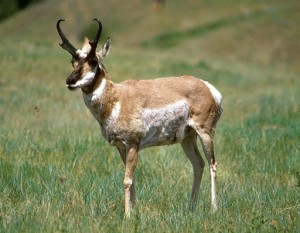Forest Reserves Slow Down Global Warming
Protected areas are reducing carbon emissions from tropical deforestation by a third, and are therefore slowing the rate of global warming, according to a new study.
 Image: Orman
Image: Orman National parks and nature reserves in South America, Africa and Asia created to protect wildlife, heritage sites and the territory of indigenous people are actually serving a different purpose. According to a new study in Scientific Reports (the first of its kind), they are reducing carbon emissions from tropical deforestation by a third, therefore slowing the rate of global warming.
Protected areas account for 20% of the world’s tropical forests and play a crucial role in providing habitats for species such as tigers, Asiatic lions, gorillas, jaguars, orangutans and forest elephants. They are also designated to conserve world heritage sites – the historic Inca ruins of Machu Picchu in Peru, for example – and to preserve territory for indigenous people in South America.
Research by scientists at the University of Exeter and the University of Queensland shows that protected areas of forest are also preventing millions of tonnes of carbon emissions from being released into the atmosphere through logging and deforestation. Tropical forests account for around 68% of global forest carbon stocks, including trees, canopy and root systems. But rainforests are under pressure from clearance to grow cash crops such as soya beans in South America and palm oil in Southeast Asia. In Africa, tropical forests are being cleared for agriculture and to produce charcoal for local use in cookery. Deforestation releases nearly twice as much carbon than is absorbed by intact forests, further highlighting the need importance of protected areas.
The scientists analysed the likely level of tree loss in protected areas, and the resulting carbon emissions, if they had been cut down. They investigated the carbon stocks and losses of millions of hectares of protected areas and found that protecting tropical forests cut predicted carbon emissions by around a third, between 2000 and 2012.
Dr Bebber, an ecologist at the University of Exeter said: “Tropical protected areas are often valued for their role in safeguarding biodiversity. Our study highlights the added benefit of maintaining forest cover for reducing carbon dioxide emissions to the atmosphere, so helping slow the rate of climate change.”
From 2000 to 2012, tropical protected areas reduced carbon emissions by 407 million tonnes per year, equivalent to 1492 million tonnes of carbon dioxide per year. Protected forest area in South America prevented 368.8 million tonnes of carbon per year being released. And in Africa, 12.7 million tonnes of carbon per year were saved. All of this carbon would have been released had the areas not been protected from clearance.
The UK’s annual carbon dioxide emissions are around 404 million tonnes per year. Therefore, the saving is more than three times the UK’s annual production of carbon dioxide emissions. Total annual carbon emissions from the tropics are thought to be between 1 and 1.5 billion tonnes of carbon per year, equivalent to 3.67 to 5.05 billion tonnes of carbon dioxide.





One Comment
Wow wish I can own one
My love for forest reservs never dies